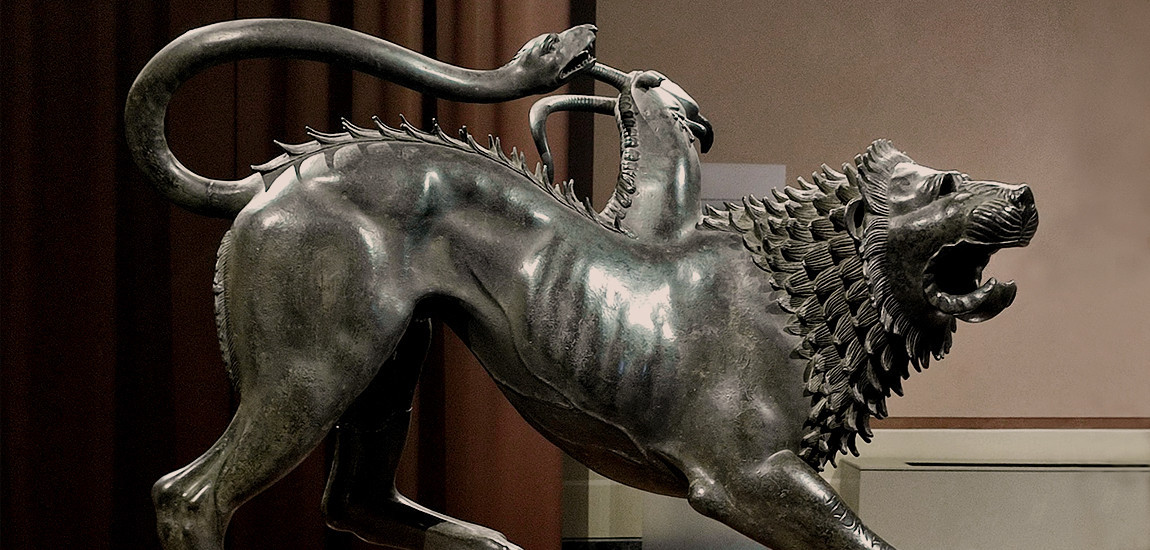
The Chimera of Arezzo, an Etruscan masterpiece
The Chimera of Arezzo, was found on November 15, 1553 during the excavation works for the construction of the Medici fortification walls, near the Porta San Lorentino.
Cosimo I de' Medici, great collector and art estimator, fell in love with this work so deeply that he decided to personally take care of its restoration, so he brought it to Florence and took care of its cleaning using goldsmith's tools.
Cosimo I, who boasted the title of Grand Duke of Etruria, put it on display in the hall of Leone X in Palazzo Vecchio, as a symbol of the Medici victory over enemy factions. It was moved to the Uffizi in 1718 at the behest of Cosimo III and then found its definitive home in 1870 when the Royal Archaeological Museum of Florence was built.
The bronze statue of Etruscan origin (5th-4th century BC) represents the three-headed monster generated by Echidna and Typhon, who had also brought into the world the Sphinx, the Hydra and Cerberus.
According to the Greek myth, this fire-breathing monster with the body of a lion, the tail of a snake and a goat's head sticking out of its back, was confronted and defeated by Bellerophon while riding Pegasus.
The
beast, struck to death, is represented as it retreats, with its whole body in tension
and the style is typically Etruscan, blending archaic Greek elements and
naturalistic characteristics: the modeling of the body and mane is synthetic,
while some aspects appear more realistic such as the veins on the body and the
aggressive pose.
This masterpiece, attributed to some artisans who worked in the Arezzo area, was
part of an offering to the Etruscan god
Tinia (corresponding to the Greek Zeus), as evidenced by the inscription on
the right front leg: "TINSCVIL",
that is "given to the god Tin ".
At the time of discovery, the bronze had no left legs, reassembled using lead castings, nor tail, which was found together with the statue but was never reattached. Instead, it was replaced by a new tail by the hand of Francesco Carradori, in 1785. The snake's tail, still present today, bites a horn of the goat's head, but in all probability in the original version the snake was facing forward towards the aggressor.
The Chimera of Arezzo is today the flagship of the Archaeological Museum of Florence, which is absolutely worth a visit, even if just to go and see it!



